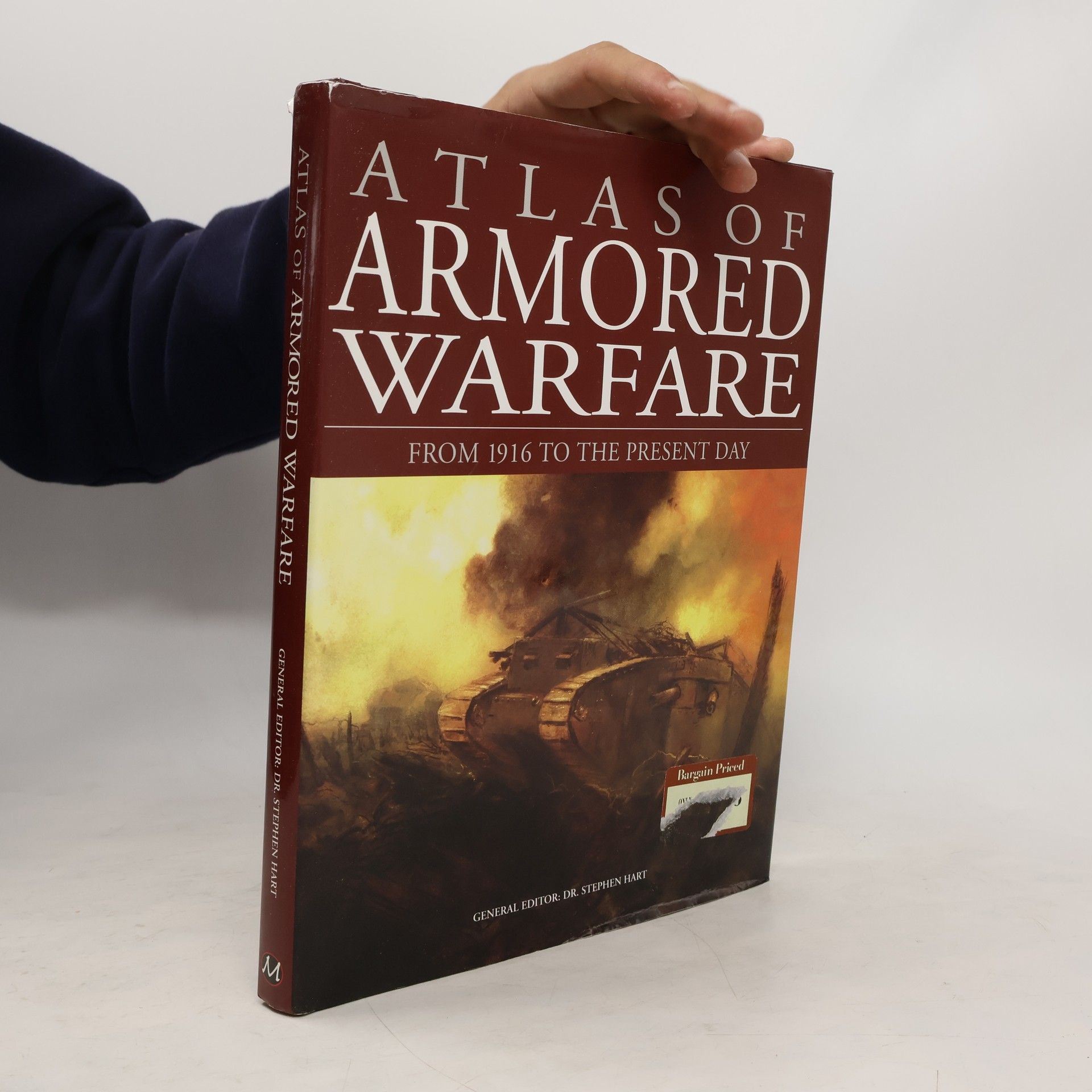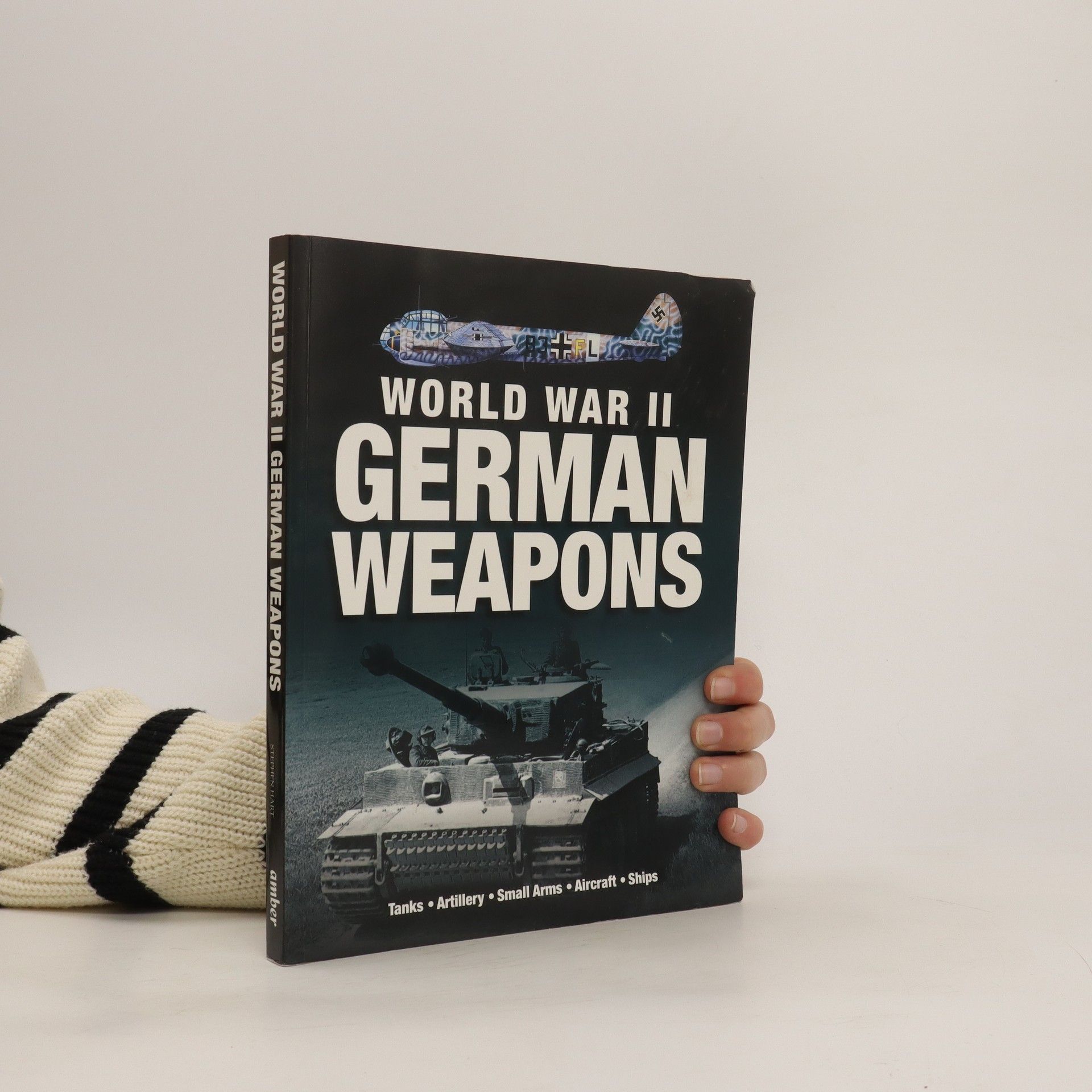Stephen Hart Bücher
Dieser Autor befasst sich mit tiefgründigen menschlichen Themen und bietet einen durchdringenden Einblick in die Charakterpsychologie. Sein Stil ist bekannt für seine atmosphärische Qualität und seine Fähigkeit, den Leser in komplexe Welten zu entführen. Die Werke berühren oft Fragen der Identität, der Erinnerung und der Natur der Realität. Leser werden seine einzigartige Perspektive und literarische Finesse zu schätzen wissen.







Moderne Panzer
Die wichtigsten Ketten- und Radpanzer im weltweiten Einsatz
Dieses Buch beschreibt die Entwicklung von Panzern, Mannschaftstransportwagen, Schützenpanzern und Radpanzern vom Ende des Kalten Krieges bis in die Gegenwart. Vorgestellt werden zahlreiche Panzer, vom kaum bekannten Chonma-ho aus Nordkorea und dem Zulfiqar aus dem Iran bis hin zu den zahlreichen Versionen des Leopard und des T-72, die in aller Welt zu finden sind. Mit 250 farbigen Zeichnungen und Fotografien mit korrekten Erkennungszeichen sowie authentischen Tarnmustern und Farbschemata.
Daß Vögel zwitschern und singen, Hunde knurren und bellen, Schafe blöken, Katzen miauen und schnurren, weiß jedes Kind. Selbst die Gesänge der Wale und die Tänze der Bienen sind heute kein Geheimnis mehr. Doch kann man diese Sprachen mit der menschlichen vergleichen? Wie kommunizieren die Tiere miteinander, und wie können wir diese Kommunikation entschlüsseln und an ihr teilnehmen?
From fighter planes to guns and ships, this compendium explores the most important and influential pieces of weaponry and equipment used by the German armed services in World War II. What were the weapons that made the Nazis seemingly invincible? Beginning with the equipment employed by the Wehrmacht and Waffen SS, such as the Panther tank, 88mm gun, and Nebelwerfer rocket launcher, and moving on to the famous aircraft of the Luftwaffe and the Navy’s most notable vessels, this fascinating guide provides an illustrated account of Germany’s major weaponry. Each featured item appears in a full-color side-profile artwork, accompanied by a summary of its development and service history, and with a specifications table giving full dimensions, weight, performance, and other appropriate details such as crew, armor, armament, and powerplant, measured in both imperial and metric. Comparisons of key types show which was fastest, had the longest range, and was best protected.
Atlas of Armored Warfare
- 224 Seiten
- 8 Lesestunden
The Atlas of Tank Warfare is a highly illustrated and accessible account of the development of tank warfare, from World War I to the present day. Featuring more than 120 complex computer-generated battle maps and graphics, The Atlas of Tank Warfare ranges from the first significant use of tanks at Cambrai during World War I through to major tank battles of World War II, the Indo-Pakistan War, the Arab-Israeli Wars, the Iran-Iraq War and the Allied invasions of Iraq in 1991 and 2003. All the maps have been specially commissioned from an expert cartographer. Each map has been designed to highlight a particular aspect of combat and so they vary in shape and size from isometric to semicircular and full-page to double-spread and in outlook, with some maps giving a global perspective while others take a narrow focus. Major battles such as Villers-Bretonneux, Amiens, Kursk and El Alamein are shown in great detail. All maps are accompanied by a key, which helps the reader to understand the action and events. With extensively researched text telling the history and the stories behind these battles concisely and clearly and more than 150 striking illustrations and photographs, this complete atlas provides an invaluable work of reference for both the general reader and the serious student of tank warfare."
Guderian
- 160 Seiten
- 6 Lesestunden
Biographers and historians have lionized Heinz Guderian as the legendary father of the German armored force and brilliant practitioner of blitzkrieg maneuver warfare. As Russell A.
Me and My Son Book One
- 600 Seiten
- 21 Lesestunden
The narrative explores the complexities of family life and the expectations placed on individuals to fulfill certain roles, particularly as a witness to significant events. It reflects on missed opportunities and the desire for richer, more meaningful life stories. The protagonist grapples with their identity and the weight of familial legacy, suggesting a deeper commentary on the nature of storytelling and the search for purpose within one's own history.
The World War II Secret Operations Handbook reveals the skills and tricks used by the British SOE, the US OSS, the French Maquis, and other special forces between 1939 and 1945. Learn how to rig up a makeshift radio, how to pass undetected in enemy territory, how to live off the land and make shelter, and how to work as a sniper.
James Chuter Ede (1882-1965) longest serving Home Secretary.
Organised chronologically by type, American Tanks of World War II offers a highly-illustrated guide to the main armoured fighting vehicles used by the US Army during World War II. Each featured profile includes authentic markings, colour schemes, and full specifications - a key reference guide... číst celé